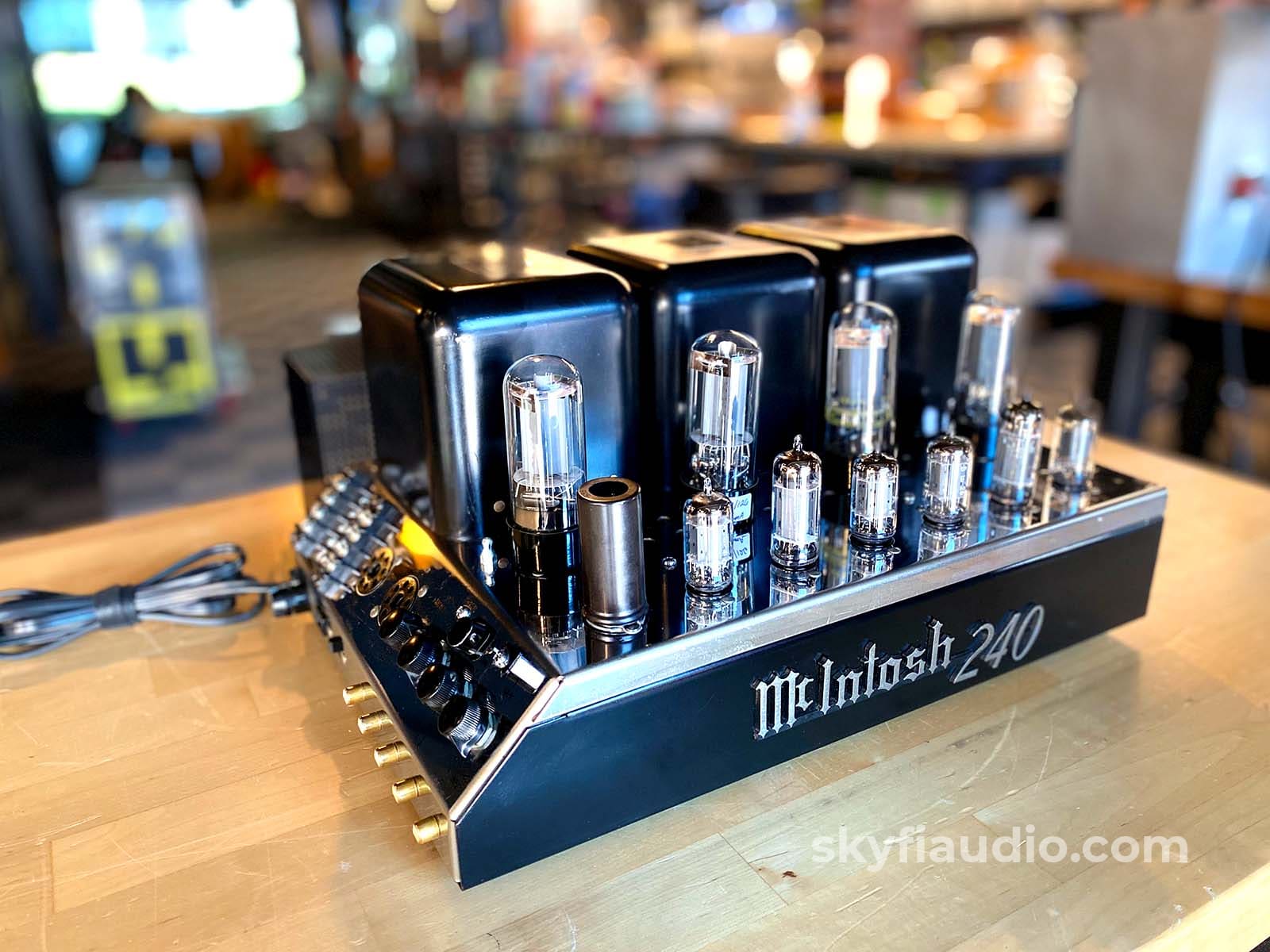
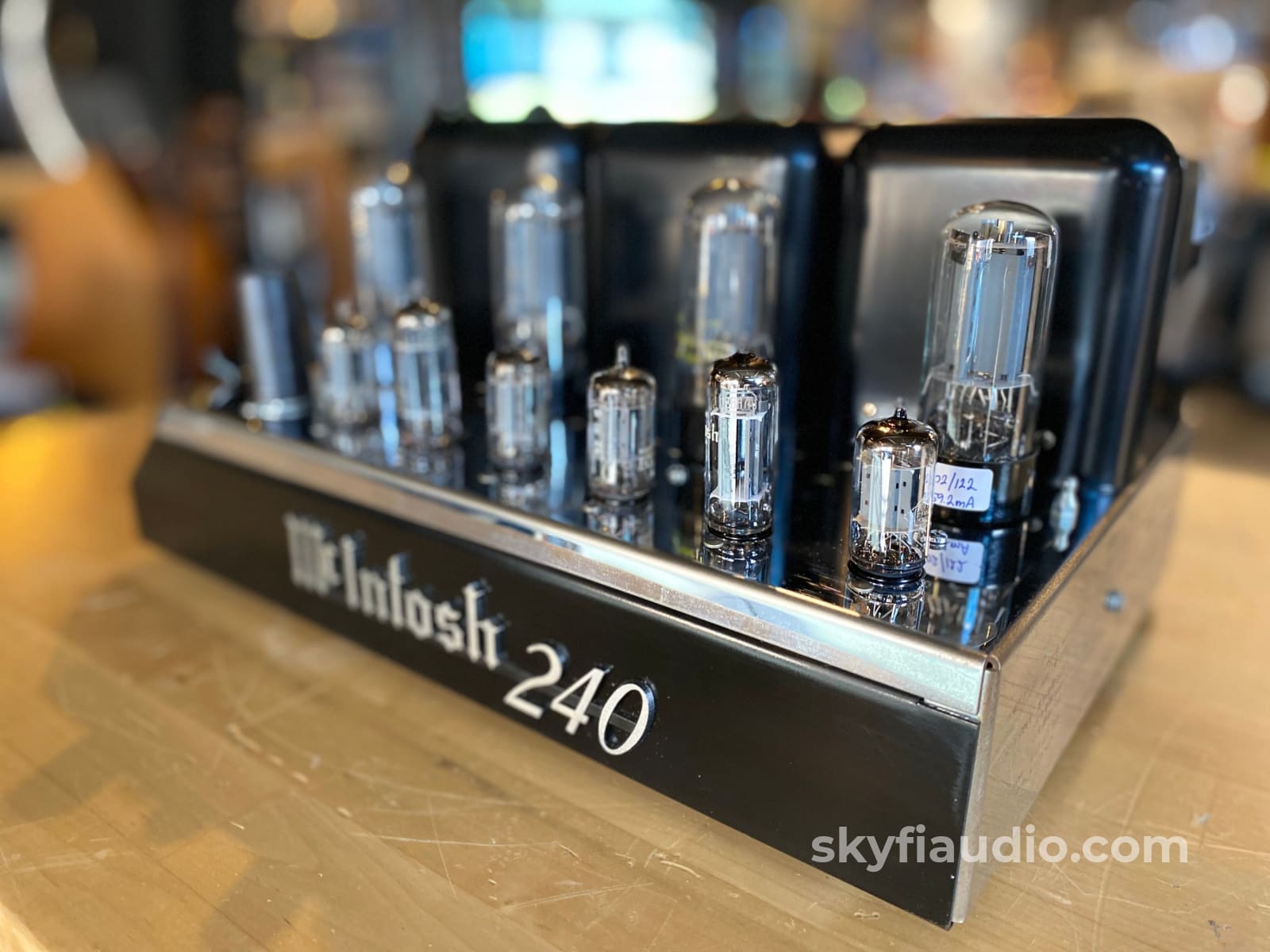
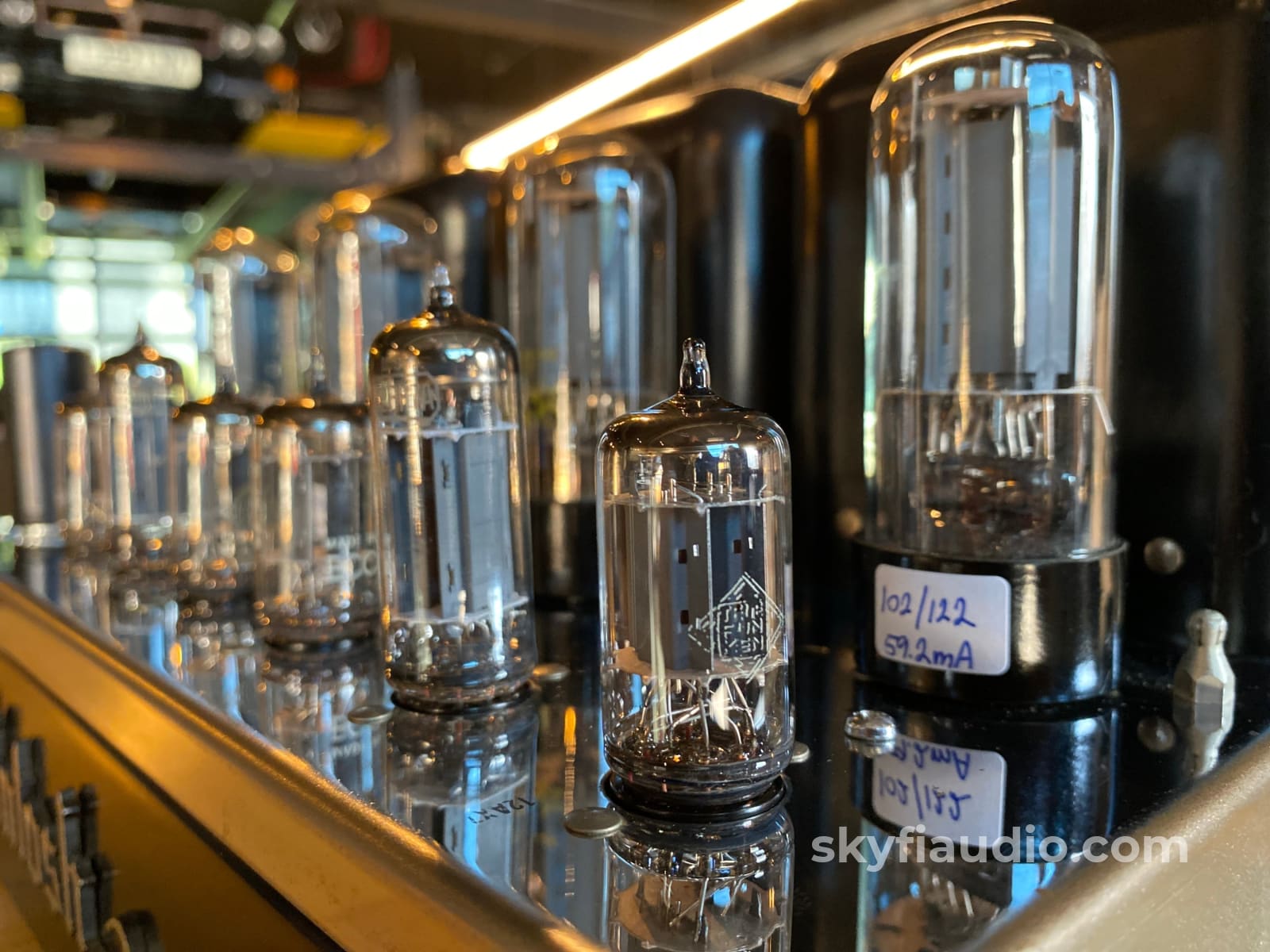
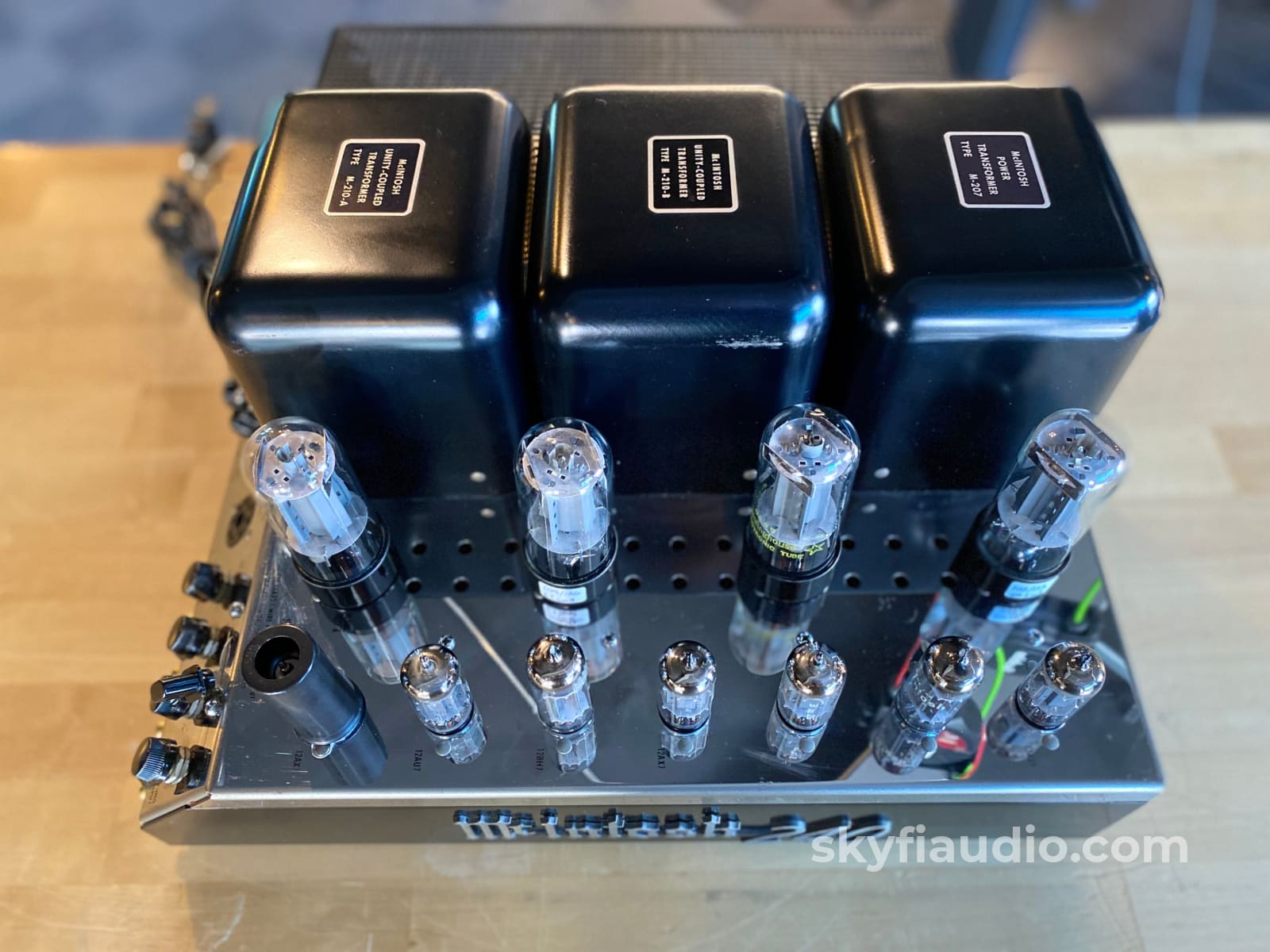

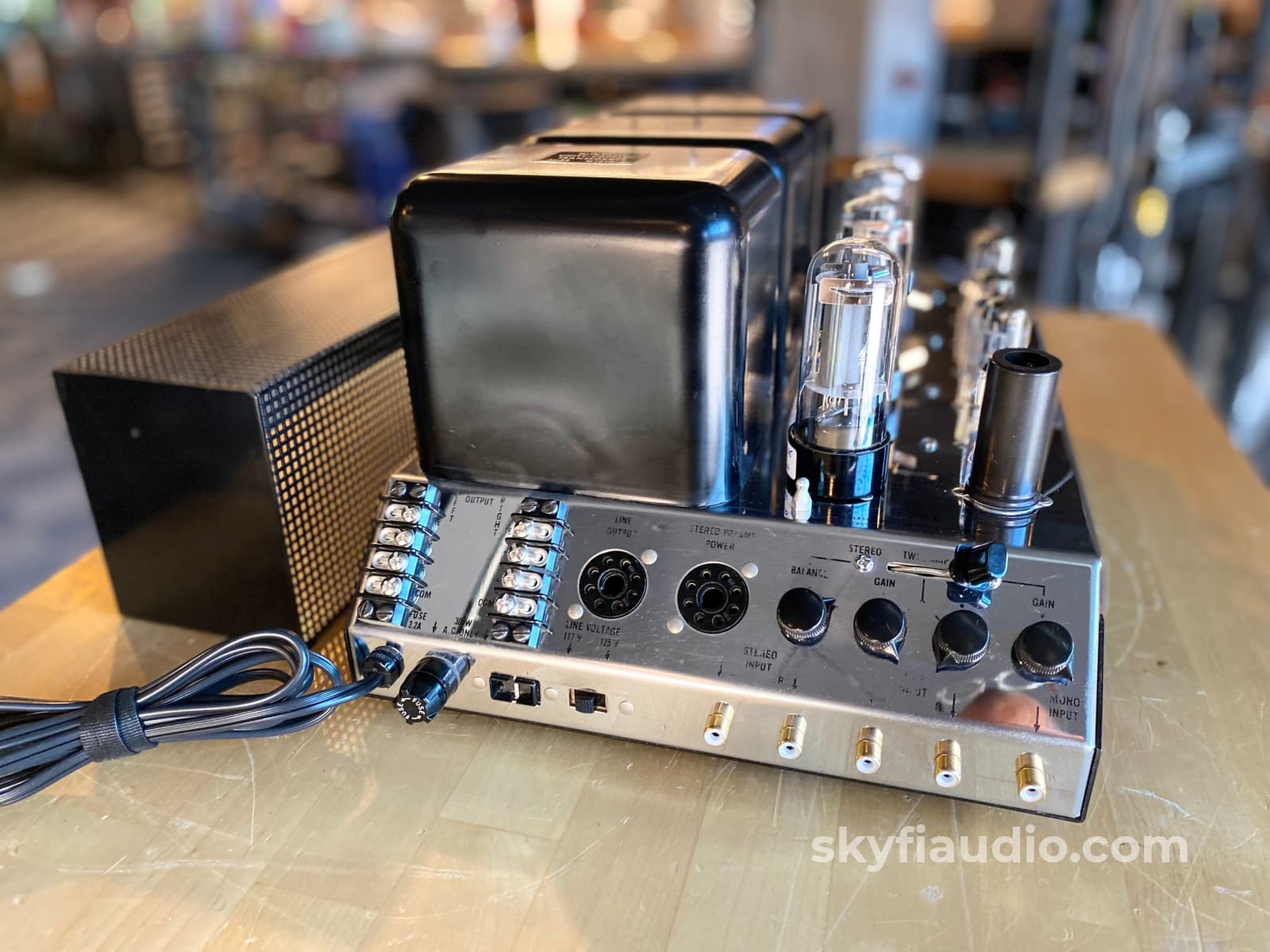
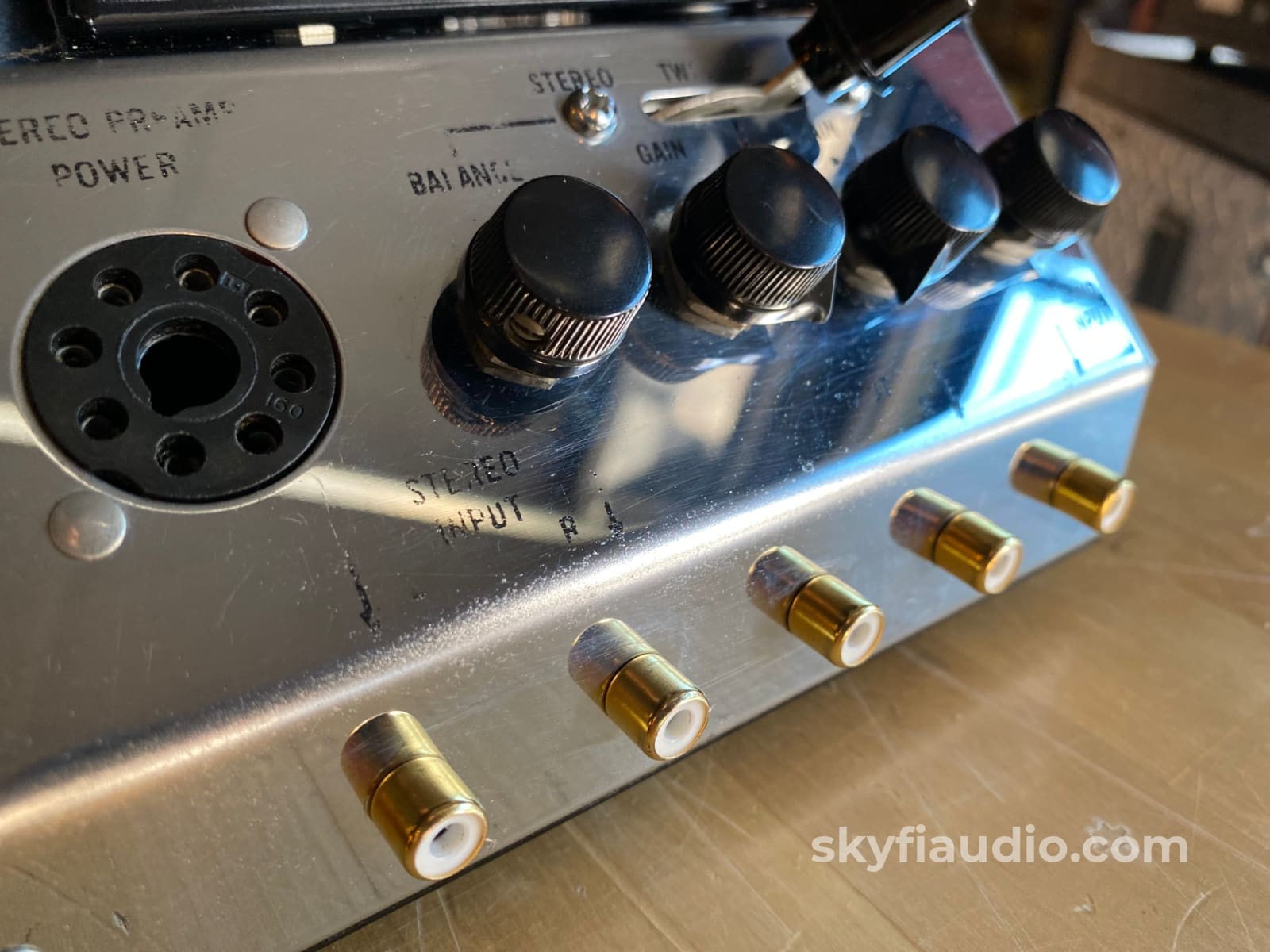
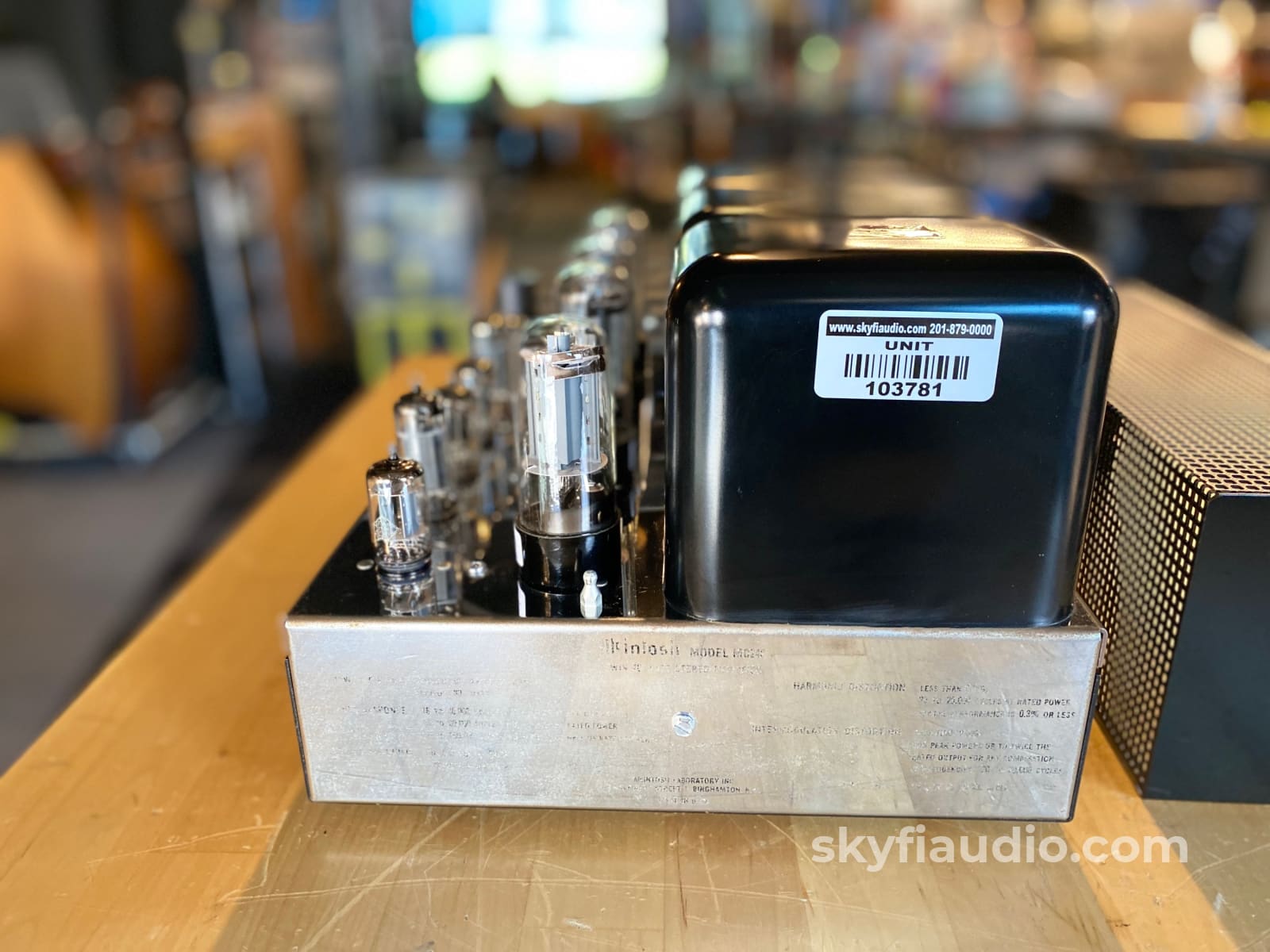
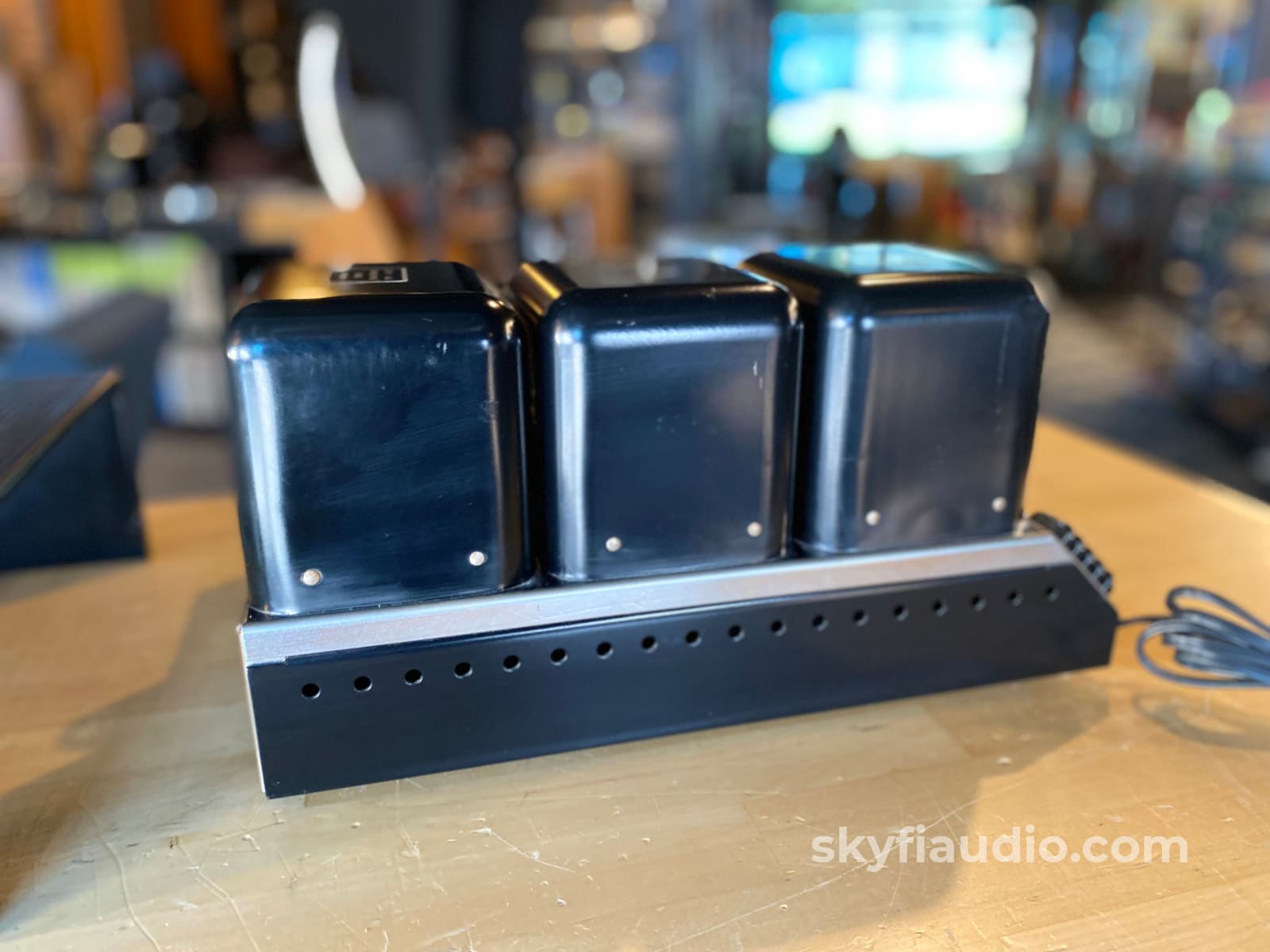
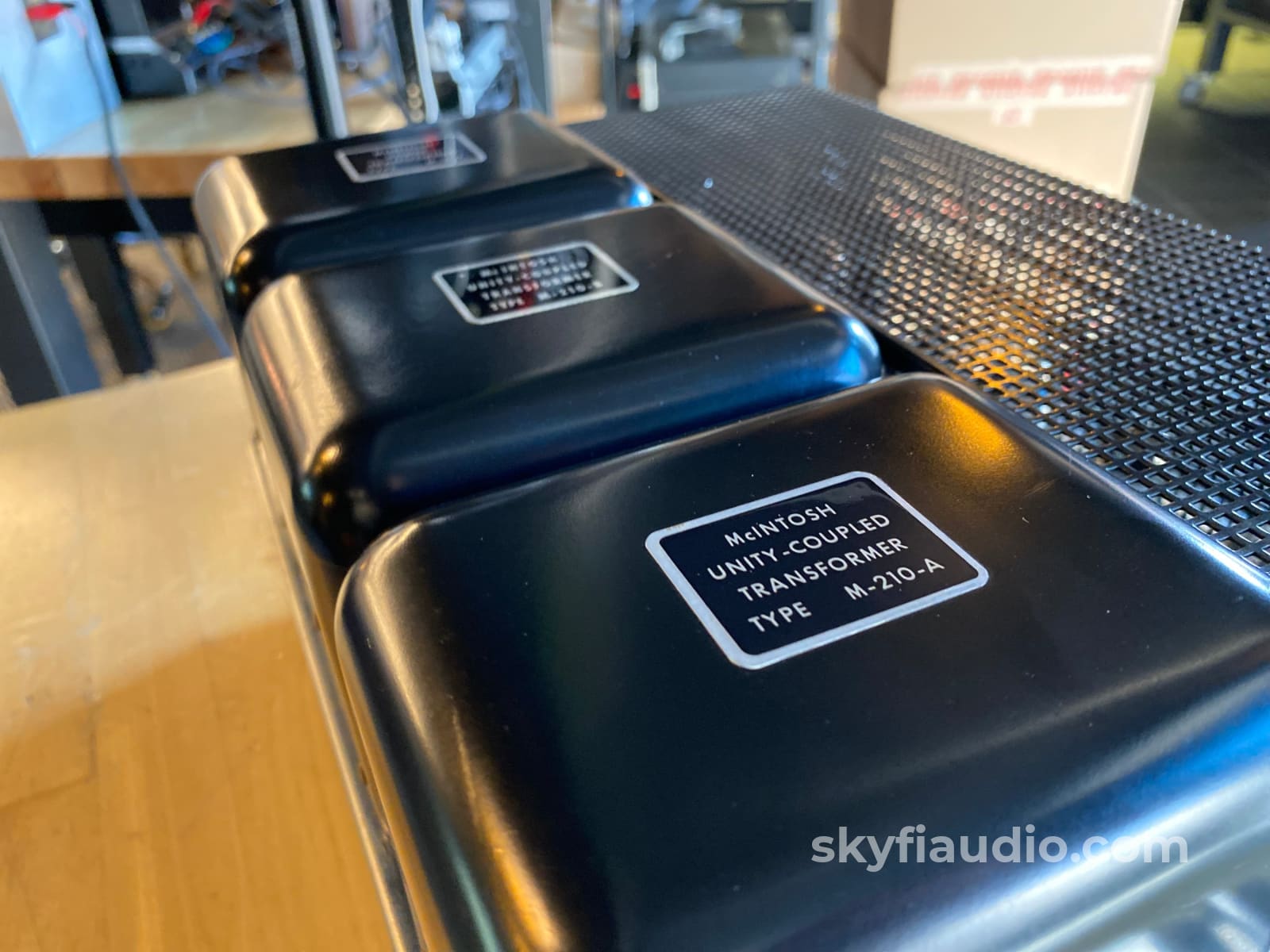
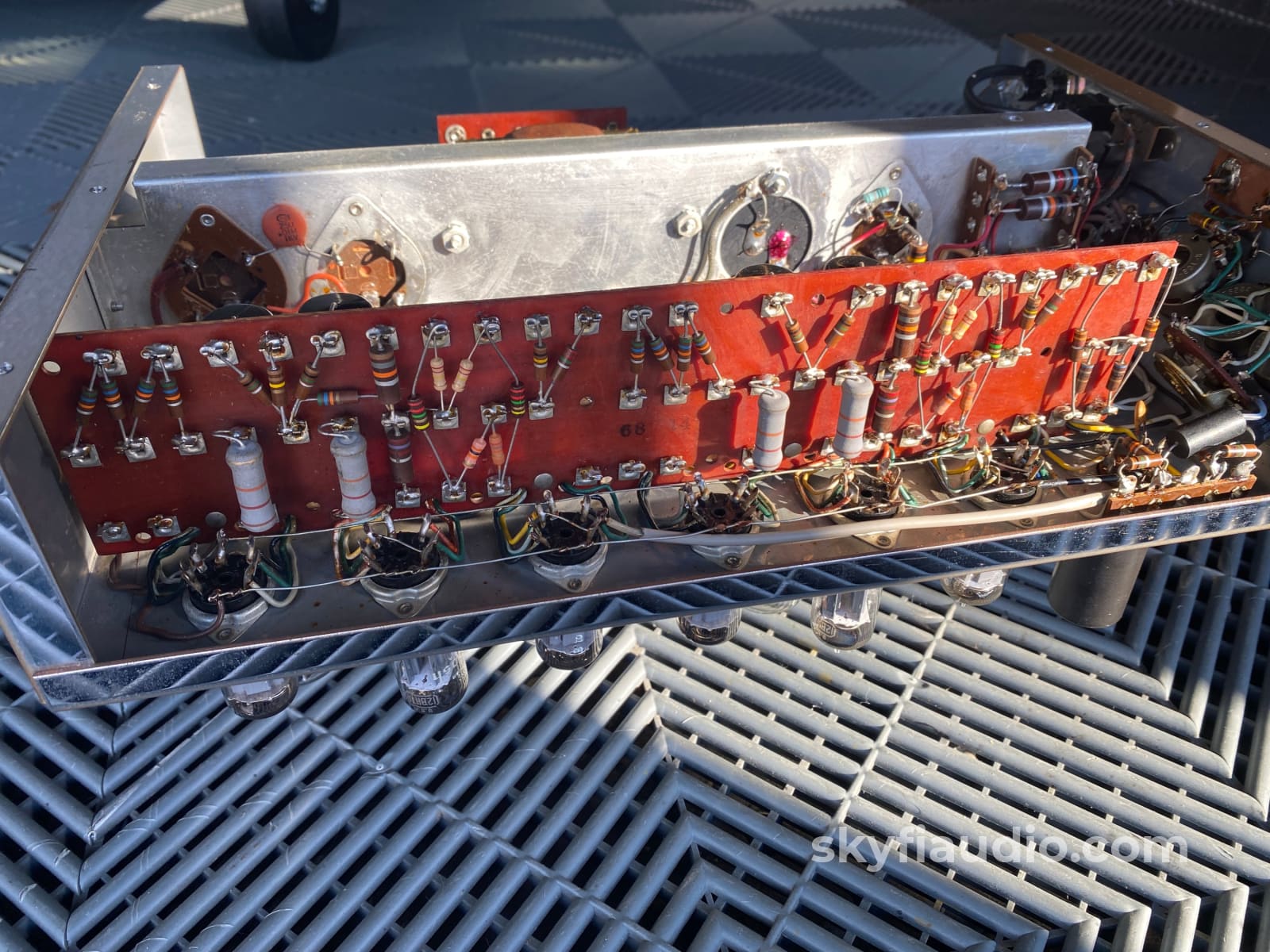
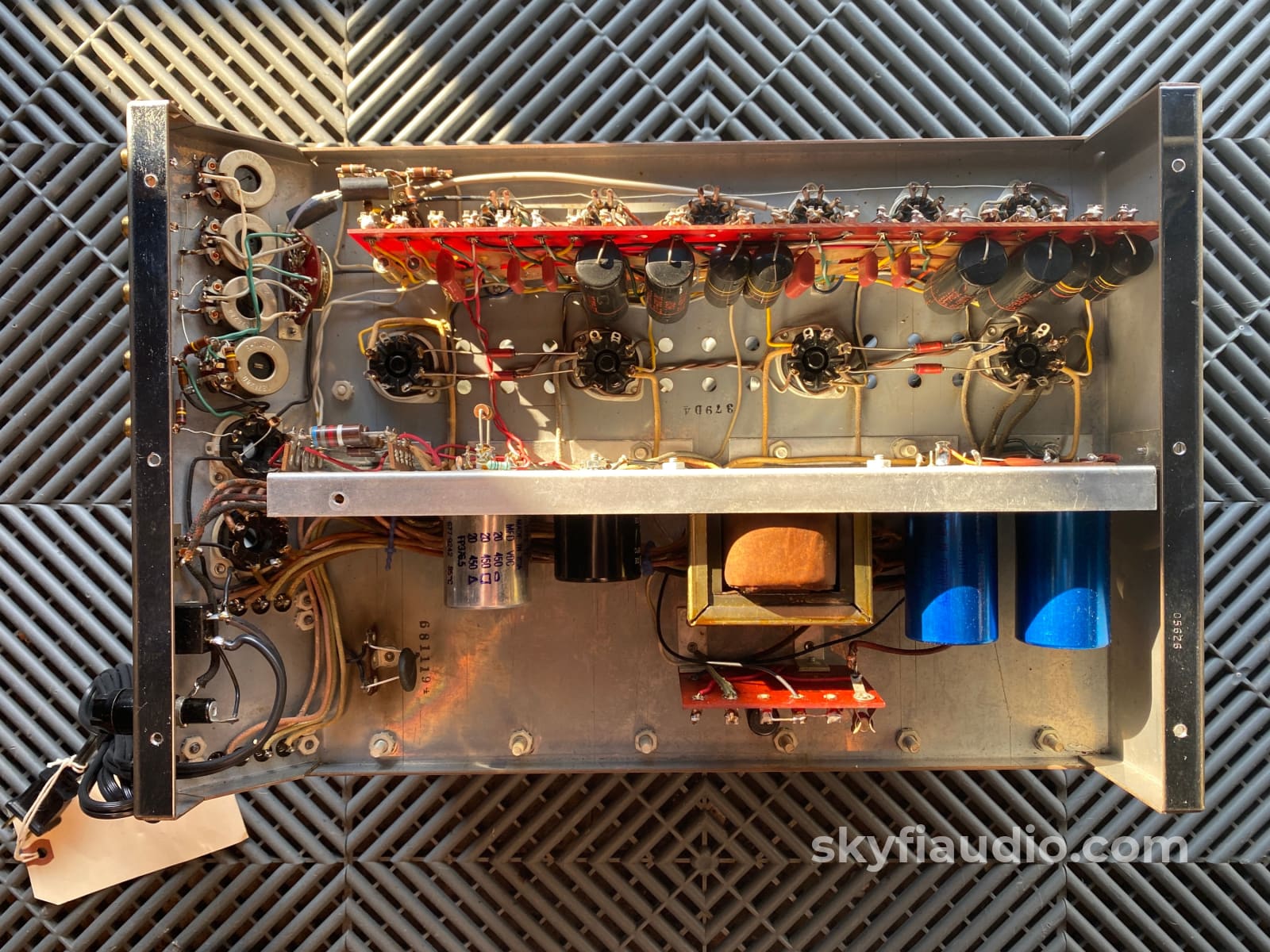
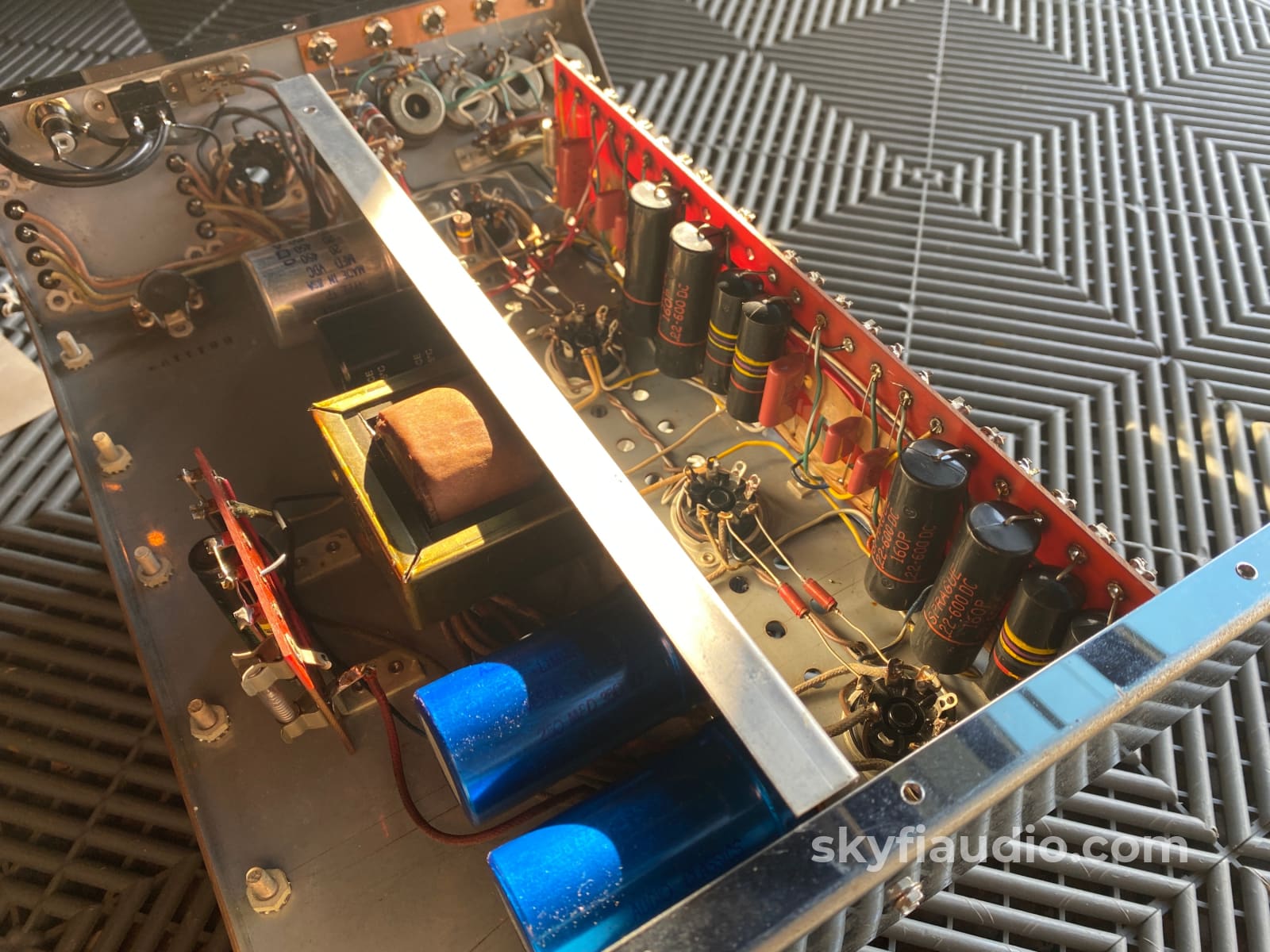
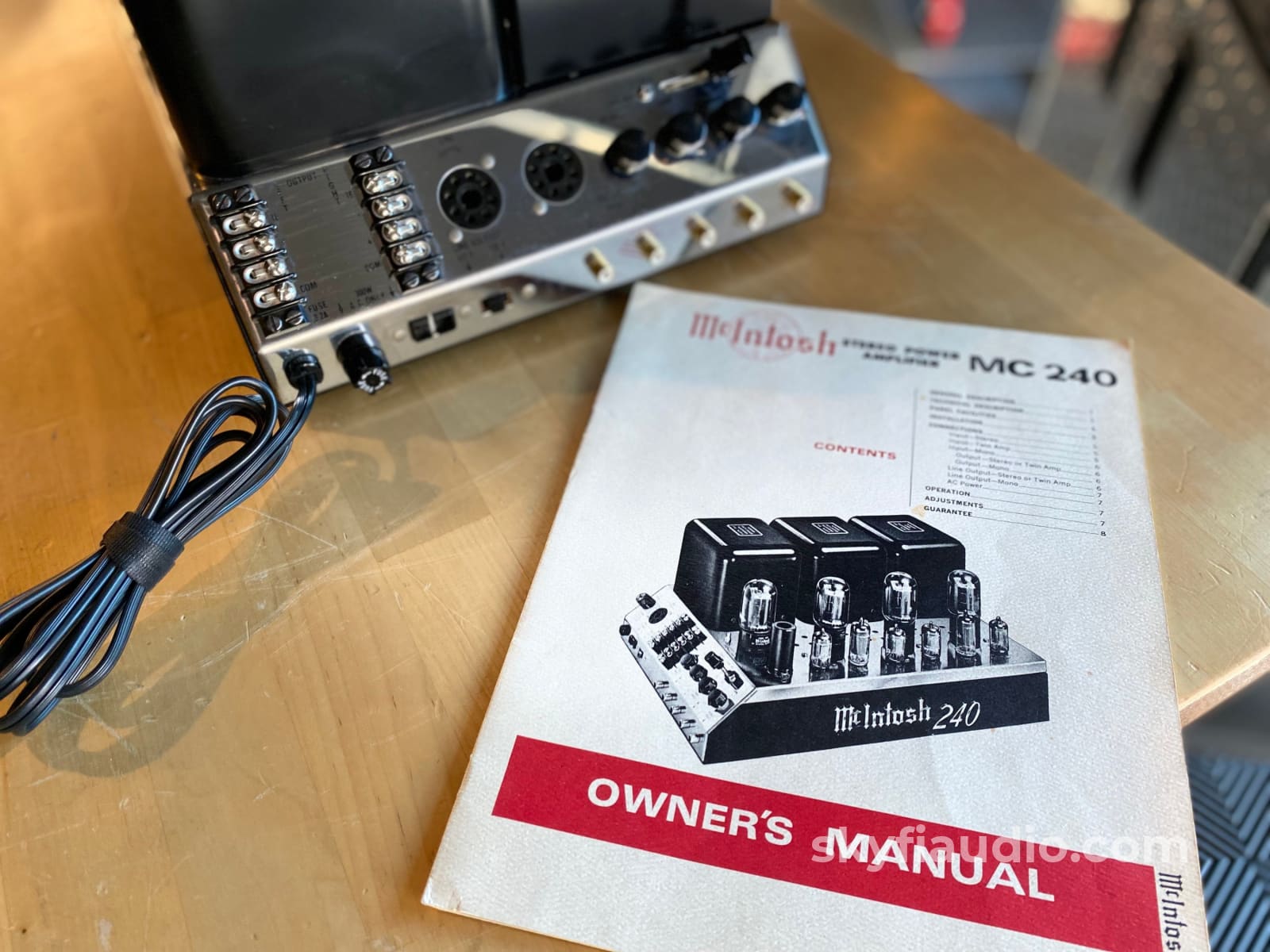
McIntosh MC240 Vintage Tube Amplifier - Fully Restored
Free Shipping on Most Electronics - Excludes Speakers and Items Requiring Freight - Contiguous U.S. Only
Pickup currently unavailable at SkyFi 479

McIntosh MC240 Vintage Tube Amplifier - Fully Restored
SkyFi 479
479 South Broad Street
Glen Rock NJ 07452
United States
The MC240 is one of the best sounding vintage tube amps from McIntosh. Just enough power (40WPC) to drive most vintage and some modern speakers, yet not too much where it heats up the room unnecessarily.
It has the traditional look of a McIntosh amplifier so successfully thought out and designed, that it's still being used today in the latest iteration of the legendary MC275.
The MC240 can be paired up with both a vintage preamp or something modern. Gain controls on the front panel allows you dial in the gain to just the right level while keeping the noise down.
Heavy-duty screw terminals allows you to use bare wire, small spade lugs, or with the use of an adaptor modern banana plugs. If you need a set of banana adapters simply let us know in your order notes.
Best of all the tubes don't need any biasing or fussing with. Just plug them in and off they go. McIntosh designs are really easy on the tubes so expect them to last a LONG time.
This MC240 was also restored by the McIntosh experts at Audio Classics in 2005 and has since been in storage since!
While we do not have service documentation for this unit, it does have an Audio Classics tag on the power cord and the work inside is similar to other units that we've seen serviced by them.
Here are some details about the restoration work performed based on our review of the work observed inside of the unit.
• Power supply
• Inrush thermistor replaced
• All electrolytic cap cans replaced
• B+ supply diodes replaced
• Bias supply diode replaced
• Select resistors replaced
• Audio Section
• Most paper caps replaced with PIO and Panasonic Film
• Select resistors replaced in key circuit locations (plate load, phase inverter balance, etc.)
• Cosmetic
• Terminal blocks replaced (Although one terminal block does have a cracked divider between 4 and 8 ohms on one channel).
• RCA jacks replaced
• Power cord replaced
SkyFi Tube Notes:
• Output tubes are a Russian 6L6 equivalent.
• Input tubes are all Telefunken aside from the 12BH7 which are RCA. All tested well on our Amplitrex AT1000.
Included with your purchase is the amplifier, a tube cage, the original user manual, and a factory fresh box from McIntosh to ensure safe travels to your home.
Click below to add our recommended matching cables from Kimber Kable, all brand new as SkyFi is an official Kimber dealer.
Kimber Kable - RCA Interconnects - Better
Kimber Kable - RCA Interconnects - Best
Kimber Kable - Speaker Cables - Good
Kimber Kable - Speaker Cables - Better
Kimber Kable - Bi-Wire Speaker Cables - Better (If Applicable)
Some excellent details from my friend (the one and only) Ken Rockwell @ kenrockwell.com:
"My McIntosh MC240 is the best power amplifier I've ever heard. While most great amps do nothing to alter the sound (what comes in is what goes out), and when transistor amplifiers alter the sound it's almost always for the worst, the subtle things tube amplifiers and especially the MC240 do to the music make it sound absolutely fantastic.
Of course the MC240 sounds completely lucid, fluid and detailed as you expect from top-end tube amps, but what you probably don't expect is that it has bottomless bass thanks to its huge transformers and special patented design that offers low distortion and flat response down to 3 cycles! My MC240 has better bass response than many of today's preamplifiers and power amps, along with the astonishingly lifelike midrange and a high end that simply shimmers.
No other amplifiers have McIntosh's Unity Coupled circuit, that along with its huge Bifilar-wound output transformers, lower the distortion to the lowest levels found in tube amplifiers. This unique circuit cross-couples the two 6L6GC output tubes into such a tight a lover's embrace that they operate as class-A at the most important audio levels. The circuit is so linear and independent of tube characteristics that it plays at low levels even with one output tube missing!
The McIntosh MC240 is McIntosh's first stereo amplifier, and their last new tube amplifier design before they gave up on tubes in favor of transistor amplifiers.
The MC240 was first, and it was followed the next year by the more powerful MC275 (75 WPC) and simpler MC225 (25 WPC)."
Please see below or our last photos for specs and details:
McIntosh MC240 - Original Sales Brochure
McIntosh MC240 - Owners Manual
Power output:
40 watts per channel into 8Ω (stereo)
80 watts into 2Ω (mono)
Frequency range:
At rated output
+0, -0.1 dB 16 Hz - 40 kHz
+0, -0.5 dB 16 Hz - 60 kHz
At one-half rated output
+0, -1.0dB 10 Hz - 100 kHz
Signal to noise ratio:
90 dB
Total harmonic distortion:
Less than 0.5% (20 Hz - 20 kHz)
Input sensitivity:
0.5V
Speaker load impedance:
4Ω, 8Ω, and 16Ω
Tube Complement:
Voltage Amplifier - One 12AX7 (Drives Both Amps)
Phase Inverter - Two 12AU7
Drive Amplifier - Two 12BH7
Cathode Follower Drive - Two 12AX7
Output - Four 6L6GC or 7027A
Dimensions:
17-1/4" x 10-3/4" x 8"
Weight:
Chassis Only - 56 lbs
In Shipping Carton - 65 lbs.
Years in Production:
1960-1969
The SkyFi Testing Process for Tube Amplifiers:
We start with a visual inspection of all internal components to make sure that there are no signs of heat stress or damage. Capacitors are checked for telltale signs of predictive failure including bulging, shrunken wrappers, or physical leakage. We also inspect resistors and other passive components for signs of overheating. If tube arcing has occurred in the past we can usually spot discoloration on the output tube sockets. On vintage units we often spot check select capacitors for value and ESR.
If the amplifier passes visual inspection, we move on to a full test of all of the tubes. We use an Amplitrex AT-1000 Tube Tester which is capable of testing both emission and Gm with a high degree of accuracy. We document the results of each tube and replace any weak or suspect tubes before proceeding. When we power on tube amplifiers for the first time we usually use a variac and current limited AC supply and slowly raise the voltage up to nominal mains level while monitoring plate, screen, filament, and negative bias supply voltages where applicable. If everything is in order we feed a low level test signal into the amplifier’s input and monitor its output on an oscilloscope across an 8 ohm dummy load. At this point we are just looking to verify basic function and confirm that the output transformers are not damaged. Once we have verified that the amplifier is safe to operate, we connected it to full mains power. For fixed bias amps we set the bias to manufacturer spec. For cathode biased amps we monitor the plate to cathode voltage to determine if the output tubes are operating in a safe range. Once the output section is verified we move onto bench evaluation.
We start by feeding the input of the amplifier with a low level 1KHz test signal, slowly increase its amplitude while monitoring the amplifier’s output on an oscilloscope for signs of noise, clipping, distortion, or improper channel balance. We continue increasing the signal level until the amplifier reaches clipping. At this point we take an output power measurement and compare it to the spec sheet of the amplifier to verify proper performance. We finish off the bench evaluation with a 1KHz square wave check and a 20Hz to 20KHz sine sweep to assess the amplifier’s frequency response characteristics. This battery of tests will usually reveal if the amplifier has any issues that need further attention.
Before the device leaves the bench, we perform a listening test with actual music using a variety of preferred test tracks. Our benches are outfitted with familiar monitor speakers which help us identify inconsistencies that will not always show up on our test gear. The main things that we are listening for are hum or noise with no signal present, proper center image, clicks, pops, or any other obvious undesirable audio characteristics.
If the unit passes all of these tests it is moved to our long term testing rig where we simulate real word operating conditions for 6-8 hours. For tube amps we like to run this test at least twice. This allows us to monitor the unit for signs of thermal runaway or intermittent issues that only crop up when it has fully come up to temperature. We find this step to be essential, especially for vintage units.
|
Item |
Included |
|
McIntosh Box |
Yes & Factory Fresh |
|
Manual |
Yes Included |
|
Remote |
Not Applicable |
|
Cables |
Yes - Power Only |
|
Physical Condition (Info Here) |
7 / 10 |
|
Working Condition |
10 / 10 |
Choose options














